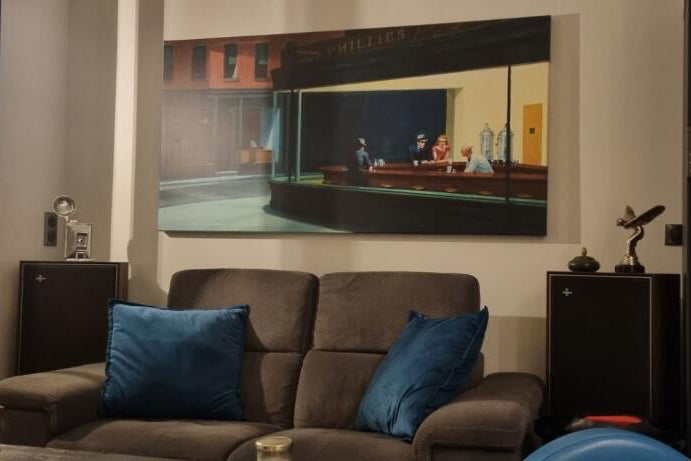Art print | Two floating angels II - Johann von Schraudolph Source: Reproduction | Deux anges flottants II - Johann von Schraudolph


View from behind

Frame (optional)
Two floating angels II - Johann von Schraudolph – Captivating introduction
In the vast panorama of art history, some works manage to transcend their era to touch the soul of those who contemplate them. "Two floating angels II" by Johann von Schraudolph is undoubtedly one of these creations. This piece, imbued with spirituality and serenity, invites the viewer to a deep introspection. The angels, celestial figures par excellence, are depicted here in a posture of elegance and grace, floating in a space where the divine seems within reach. The soft light enveloping them evokes a dreamlike atmosphere, encouraging meditation and contemplation. Through this art print, the viewer is transported to a world where beauty and transcendence meet.
Style and uniqueness of the work
Johann von Schraudolph's style is distinguished by an exceptional mastery of light and color. In "Two floating angels II," delicate hues create a striking contrast between the gentleness of the angelic faces and the darker background that surrounds them. Every detail is carefully crafted, from the feathers of the wings to the serene expressions of the angels. This meticulous attention to detail reflects the influence of Romanticism, where emotion and spirituality occupy a central place. The figures seem to float in an undefined space, defying the laws of gravity, which contributes to the impression of eternity emanating from the work. The composition, both simple and powerful, allows focus on the very essence of the angelic representation, symbolizing peace and protection.
The artist and his influence
Johann von Schraudolph, a German painter of the 19th century, is often recognized for his ability to fuse the sacred and the profane. Trained in the major ateliers of his time, he developed a style that is uniquely his own, oscillating between realism and idealization. His work is marked by a constant search for beauty and harmony, values that resonate deeply in "Two floating angels II." Schraudolph was also influenced by the artistic currents of his time, notably Neoclassicism and Romanticism, incorporating elements of these

Matte finish

View from behind

Frame (optional)
Two floating angels II - Johann von Schraudolph – Captivating introduction
In the vast panorama of art history, some works manage to transcend their era to touch the soul of those who contemplate them. "Two floating angels II" by Johann von Schraudolph is undoubtedly one of these creations. This piece, imbued with spirituality and serenity, invites the viewer to a deep introspection. The angels, celestial figures par excellence, are depicted here in a posture of elegance and grace, floating in a space where the divine seems within reach. The soft light enveloping them evokes a dreamlike atmosphere, encouraging meditation and contemplation. Through this art print, the viewer is transported to a world where beauty and transcendence meet.
Style and uniqueness of the work
Johann von Schraudolph's style is distinguished by an exceptional mastery of light and color. In "Two floating angels II," delicate hues create a striking contrast between the gentleness of the angelic faces and the darker background that surrounds them. Every detail is carefully crafted, from the feathers of the wings to the serene expressions of the angels. This meticulous attention to detail reflects the influence of Romanticism, where emotion and spirituality occupy a central place. The figures seem to float in an undefined space, defying the laws of gravity, which contributes to the impression of eternity emanating from the work. The composition, both simple and powerful, allows focus on the very essence of the angelic representation, symbolizing peace and protection.
The artist and his influence
Johann von Schraudolph, a German painter of the 19th century, is often recognized for his ability to fuse the sacred and the profane. Trained in the major ateliers of his time, he developed a style that is uniquely his own, oscillating between realism and idealization. His work is marked by a constant search for beauty and harmony, values that resonate deeply in "Two floating angels II." Schraudolph was also influenced by the artistic currents of his time, notably Neoclassicism and Romanticism, incorporating elements of these










